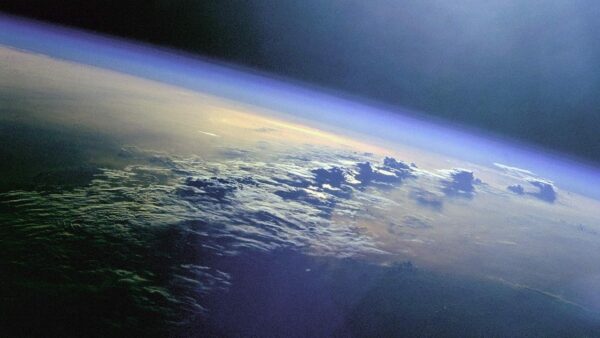The Moon plays an important part in life on Earth. It causes tides, the pattern of which has guided humans for thousands of years. It also plays a part in giving our planet a relatively moderate climate, by stabilizing a slight wobble the Earth has when it spins on its axis.
The Moon is our planets only natural satellite. It’s the fifth largest in the solar system, but is the largest relative to the size of its planet. To distinguish the Earth’s Moon from others it is sometimes referred to as Luna, from the Latin word meaning ‘Moon’.
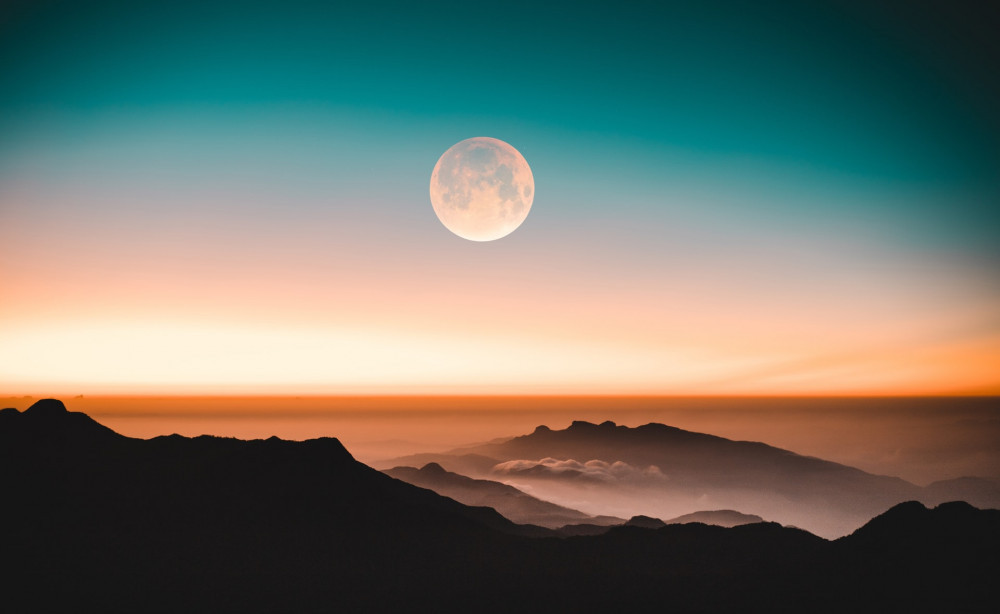
- Where Did The Moon Come From?
- How Big Is The Moon?
- How Far Is It From Earth?
- Why Do We Always See The Same Side?
- Why Do We See Different Phases?
- How Long Is A Day On The Moon?
- What Is The Moon Made Of ?
- Does The Moon Have An Atmosphere?
- What Are The Hottest And Coldest Temperatures On The Moon?
Where Did The Moon Come From?
There have been three main theories as to how the Moon came to orbit our planet.
The accretion theory suggested that the Moon was created along with the Earth at its formation. Gravity would have bound particles of matter together to form the Moon in the early solar system, at the same time that this process formed the Earth.
For this theory to hold up it was supposed that the material on the Moon would be the same as Earth, but when the Apollo missions brought samples of Moon rock back, the accretion theory was called into question.
It was revealed that there was a difference between the type and proportion of minerals on the Moon compared to the Earth. Studying Lunar meteorites has also shown the same result, which is important as these come from all over the Moon and give a better overall picture.
Capture theory proposes that the Moon developed at a different part of the solar system and that it wandered close enough to be drawn into orbit by Earths gravity.
It would explain the differences in composition between the Earth and the Moon, although there is a problem with this theory.
Although it’s known that capture theory has been responsible for other moons around planets, these have been much smaller. The two moons that orbit Mars (Phobos and Deimos) for example.
The Moon is of such a size that many scientists are unsure that the Earth could capture the Moon without having it’s orbit disrupted.
What is most widely accepted today is called the giant-impact theory. It proposes that 4.45 billion years ago the Earth collided with another planet about the size of Mars.
The Earth was nearly destroyed by this mammoth collision and the other smaller planet (named Theia) did not survive the impact. Huge amounts of material was ejected into Earths orbit, and the giant impact theory suggests that our Moon was formed from this debris.
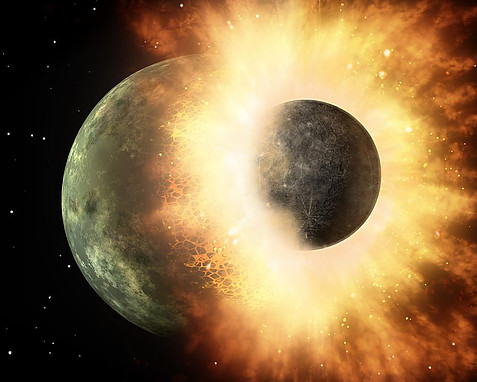
This giant impact would have released an enormous amount of energy, melting the outer shell of Earth into a magma ocean. The newly formed Moon would also have had its own magma ocean.
Luna rock samples have indicated that the Moon was indeed once molten, and it is thought that only an extremely energetic process, such as a giant impact, could provide this energy.
Although the accretion theory and the capture theory both have parts to them which provide a convincing explanation for the existence of the Moon, they leave many questions unanswered.
At present, the giant impact hypothesis appears to be the best model to fit the scientific evidence for how the moon was created.
How Big Is The Moon?
When you see the Moon in the night sky it is difficult to judge its actual size. What you may see can vary from a full Moon, where sometimes it appears to be much closer to the Earth, to a crescent Moon, which looks much further away.
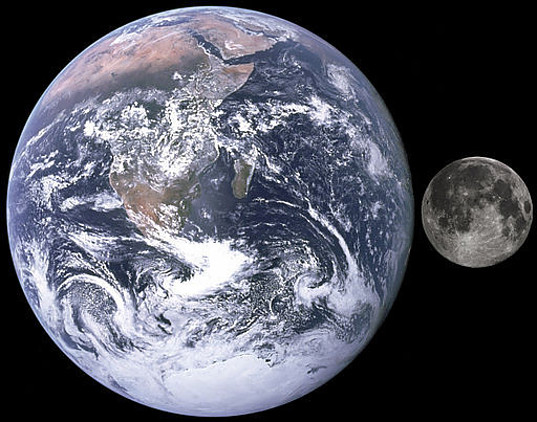
It can also be difficult to judge size as the Moon has an elliptical orbit which results in the moon being closer to the Earth at some points, and further way at others.
The Moon, compared to Earth, is around 3.7 times smaller. The Earth has a diameter of 12,742 km, while the Moon’s diameter is 3,476 km.
The surface area of the Moon is 37.9 million square kilometers which, although it sounds like a huge number, is actually less than the surface area of the continent of Asia. The Earth in comparison is a whopping 510 million square kilometers.
To get another perspective on the size of the Moon, it is around the same width as Australia which has a slightly larger diameter of 3,606km.
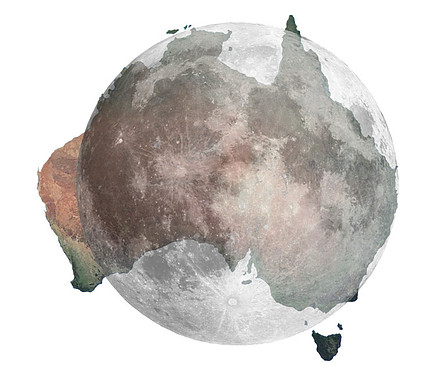
Although the Moon is comparable to Australia in its width, because it is a sphere the Moon has a much bigger surface area. Australia has a surface area of some 6.79 million square kilometers, whereas the Moon is 37.94 million km² in surface area, more than 5 times as big.
How Far Is It From Earth?
The Moon’s orbit around the Earth is not a perfect circle, and so the elliptical nature of the Moon’s orbit means it is closer to the Earth at some points and further away at others.
When it’s at its closest point, the Moon is 225,623 miles away from Earth, whereas at its furthest point it’s 252,008 miles away. Taken as an average the Moon is 238,855 miles from Earth.
This has not always been the case. If the Giant impact theory for the creation of the Moon is indeed correct, the young Earth and Moon would have been between 10 to 20 times closer than they are now.
Today the Moon is moving away from the Earth at a rate of about 4cm (1.5 inches) per year.
Why Do We Always See The Same Side ?
The Moon is in orbit around the Earth, and at the same time rotates on its own axis. We always see the same side of the Moon because the amount of time it takes to circle our planet is the same that it takes to complete a revolution on its axis.
This alignment between the orbital period and the rotation is known as synchronous rotation, and is due to the action of gravity.

The moon’s gravity slightly warps the Earths shape and gives us tides. Likewise, our planets gravity pulls at the Moon, creating a rocky, high-tide “bulge” facing us.
When the Moon formed it was much closer to the Earth, and rotated around its axis faster than it does now. The forces of gravity were very powerful and acted like a brake, generating a friction that gradually slowed the speed of rotation of the Moon.
This continued until its period of rotation coincided with its orbital period. The moon became “tidally locked,” and it has presented us the same face ever since
Why Do We See Different Phases ?
Even though the Moon rotates so that the same side always faces the Earth, if you have clear skies it still looks a little different every night.
This happens because as the Moon orbits the Earth you see a differing amount of the sunlit portion. At a point in Moon’s orbit the fully sunlit part can be seen from the Earth, and as it continues its orbit we see less of the illuminated side.
This continues until the Moon has completed half of its orbit when the side facing the Earth is dark. After this, the Moon continues its orbit and we start to see more of the sunlit side, until it is fully illuminated again .
These differing views of the Moon take place over its orbital period of 27 days and are called ‘phases’, There are 8 different phases and each one has its own name.

In chart above the center ring shows the moon as it revolves around the Earth, as seen from above the north pole. The outer ring shows what we see on the Earth during each corresponding part of the Moon’s orbit.
How Long Is A Day On The Moon ?
A day on Earth is measured by one complete rotation on its axis, which comes to 24 hours on average.
Because of a process called tidal locking the moon rotates on its axis at the same rate as it orbits the Earth. This results in the Moon always showing the same face as visible from Earth.
A lunar day is measured as the length of time for the moon to complete one orbit around the Earth and return to the same phase, which comes to 29.53 Earth days. This is slightly longer than its orbital period.
We can see a day passing on the Moon by watching its month long cycle of phases.
What Is The Moon Made Of
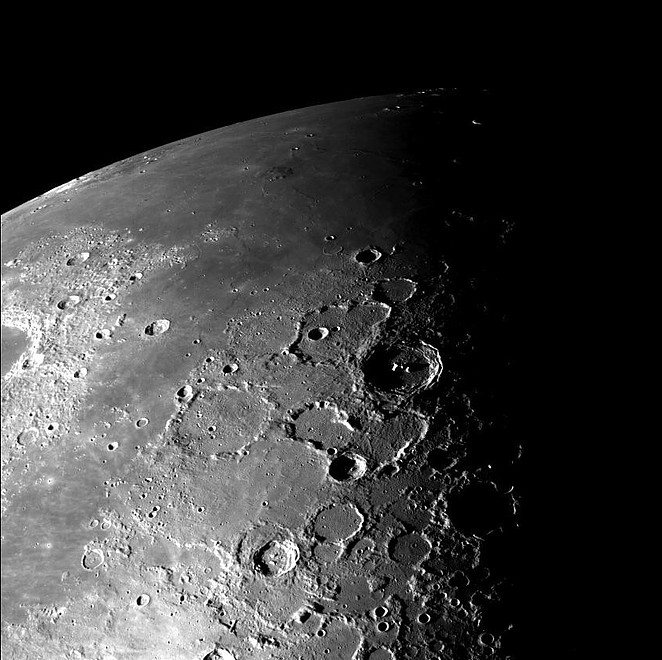
The Moon is similar to the Earth in that it is made up of three different layers: the crust, the mantle and the core.
The crust is the top layer and this is between 38 to 63 miles (60 to 100 kilometers) thick. It’s made up of a rocky surface
predominantly of two types of rock called Anorthasite and Basalt.
When looking up at the Moon, lunar anorthosite can be seen as the lightly reflective area, known as the Lunar Highlands. You may also see dark areas of the Moon which are Basaltic plains formed by ancient magma seas.
The surface is covered in a blanket of loose deposits called Regolith, largely made up of dust and broken rocks.
Lunar regolith is as much as 30 meters deep in some places while in others it is a mere three meters deep. Regolith is present not only on the Moon, but also on the Earth and other terrestrial planets and moons.
The mantle, beneath the crust, is known to be around 1000km thick but has been difficult to evaluate regarding its composition.
The dark basalt plains on the moon were formed around 2.8 billion years ago by magma seas boiling up from the mantle and this gives clues to the mantles’ composition.
Analysis of these basalts indicate that the mantle is composed mostly of the minerals olivine, clinopyroxene and orthopyroxene and that the lunar mantle is more iron rich than that of Earth.
The third and deepest layer is the core, at the centre of the Moon. This has two distinct parts, a solid-iron inner core with a diameter of around 480km, surrounded by a liquid-iron core, giving a total core diameter of around 660km.
Compared to other terrestrial planets (like the Earth) which have cores that measures around 50% of the planets diameter, the moon has a relatively small core at around 20% of the lunar diameter.
Does The Moon Have An Atmosphere ?
For a long time scientists thought that there was no atmosphere on the Moon, but recent studies have found that there is one.
The atmosphere discovered is extremely thin and contains helium, carbon dioxide, argon, neon and methane. Where this thin atmosphere comes from is still unknown although many theories exist.
One theory proposes that the solar wind (a stream of charged particles released by the sun) is stripping material from the surface of the moon. Another, that this newly discovered thin atmosphere may be the result of meteor impacts.
The almost imperceptible atmosphere has left the moon with virtually no protection from the bombardment of rocks that took place during the moons early existence.
The impact craters you can see even with a small pair of binoculars have remained prominent because the Moon has no weather and so there is no erosion on the lunar surface.
What Are The Hottest And Coldest Temperatures On The Moon?
The Moons solid iron core has a temperature of between 1,327°C and 1427°C. This is hot enough to create a surrounding molten liquid iron outer core, but not hot enough to warm the surface.
At the surface of the moon the temperature varies enormously between night and day. As there is only an extremely thin atmosphere it cannot block some of the suns rays or trap heat and insulate the surface.
This means that during the day the temperature at higher elevations can reach a whopping 224°F (106°C), whereas at night it can plummet to a temperature of -298°F (-183°C).

Image Credit : NASA
